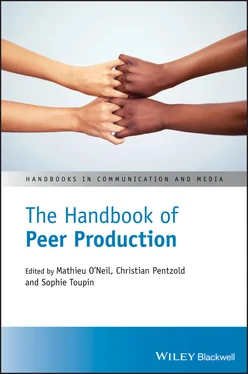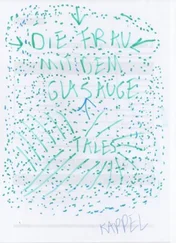Both rules and norms rest on collective forms of knowledge and shared mindsets which endow them with sense and meaning. These cultural frameworks of wider belief systems as well as repetitive patterns of action often remain tacit. As such, they “not only constrain options: they establish the very criteria by which people discover their preferences” (DiMaggio and Powell, 1991, p. 11). Similarly, Hall and Taylor (1996) suggested that “institutions influence behavior not simply by specifying what one should do but also by specifying what one can imagine oneself doing in a given context” (p. 948). This horizon of thought and agency cannot be reflected upon as a whole. The “way we do things” escapes instrumental efforts to efface, add, or change particular elements as it unfurls in long‐term processes of habitualization. This happens, as Berger and Luckmann (1966) stated, when an action is repeatedly performed. It becomes instituted as an expected pattern which is reproduced in further activity and as such then becomes the matter of codification, instruction, and reinforcement. The Code of Conduct adopted by the Debian project in 2014 demonstrates this dynamic. It sets down a number of basic principles. For instance, it includes the request to be respectful, cooperative, and concise.
As a social imaginary, suggests Charles Taylor (2002), basic normative understandings are “not a set of ideas; rather it is what enables, through making sense of, the practices of a society” (p. 91). Compliance does, therefore, occur because other kinds of thinking or acting are quite inconceivable (Scott, 2001; Zucker, 1977). Consequently, even when peer production projects do not feature a written code of conduct, accepted contributions will still follow an implicit cultural code. With a distinction made by John Searle (1997) we can say that work in peer production might, at times, not be guided by regulatory rules of commands and interdictions, but they are anchored by constitutive rules of sensemaking and evaluation.
The three institutional pillars can only be separated for analytical purposes. In practice, they are entangled: prescriptive rules go along with normative creeds which again only make sense against a background of taken‐for‐granted understandings. In peer production, institutions define what are considered to be correct forms of participation. They justify different positions among contributors and their stratified rights and obligations to execute decisions. They also establish authority among the stratified project participants and they account for their license to employ or manipulate technological levers.
It is important to note that the software and hardware of peer production enclose an institutional dimension sui generis (Lessig, 1999). As virtually all projects rest on a technological infrastructure, design implications are essential instruments that configure the agency of contributors. The programs and algorithmic procedures set down in code are used in order to materialize regulations and social norms by way of organizing access to technical features as well as to the programming facilities themselves (Kesan & Shah, 2005).
Studying the institutional conditions in Wikipedia, Butler, Joyce, and Pike (2008) distinguished a set of perspectives among editors. One way of defining institutions was as rational efforts to achieve consistent and reliable decisions and to codify role positions and duties. From a different perspective, they were taken to represent evolving, competing entities which propagated themselves: rules generate more rules. Another view accentuated the construction of meaning and identity that defines the character and ambition of the project. Institutions were furthermore framed as external signals that indicated to audiences or users not actively participating that the project attends to problems, and finds ways to address them. They were also regarded as being internal signals that raise awareness for topics or perspectives and draw boundaries of a project’s inside and outside. Wikipedia’s set of rules, norms, and basic understandings was specified in terms of negotiated settlements and trophies that mark the end of conflict, or to signal binding consensus. Finally, institutions also served as control mechanisms set in place to ensure appropriate action.
Overall, institutions in peer production help to order the dispersed engagement of volunteers and to bring together meaningful, valuable outcomes. They should facilitate, not suppress productive engagement. In open projects with unsolicited membership and the constant exit option, we often find a plastic interpretation of institutions, not a strict enforcement though there are also institutionalized forms of sanctioning and ostracizing users. The flexible handling of rules and social norms pertains to the interests and agendas of the users involved. Hence, institutions in peer production are sites of conflict and specification and thus form part of editorial power plays (Kriplean et al., 2007). Besides, they are a matter of socialization and instruction (Viègas et al., 2007). In this regard, Gabriella Coleman (2013) referred to an “ethical enculturation” (p. 124) she encountered among the contributors to the free and open source software project Debian. In order to stay relevant and mirror the requirements and concerns of the users, the institutions had to be actively practiced and passed on to incoming participants.
3 What Rules and Norms? Policies, Guidelines, and Basic Understandings in Peer Production
Institutions in peer production can be classified into those oriented towards products and those centering on work processes. Thus, they encompass, on the one hand, content standards about the form and quality of the generated and delivered goods and services. On the other, they include interactional standards and procedural standards that arrange the cooperation among project members. Reflecting the institutional register of regulations, norms, and basic understandings, peer production projects have formulated cognate distinctions with different degrees of authority, from axiomatic principles and enforced rules to advice or cues. They either prescribe, explain, or suggest correct forms of conduct and valid contributions to the project, respectively. In sum, they define a more or less strict scope of activity. This incorporates, along a decreasing level of exigency and validity, actionable rules, moral tenets, and non‐binding musings.
Somewhat exemplary for a number of other peer production efforts, the English‐language Wikipedia features three levels of policies, guidelines, and essays. The online encyclopedia rests on a core set of obligatory “five pillars” that originate from the beginnings of the project in 2001. One precept determines “What Wikipedia is not,” and thus the content scope of the articles. A second specifies the so‐called “neutral point of view.” It demands authors to represent all significant views fairly, proportionality, and without bias. The third principle, “Wikipedia is free,” states the copyright status of the project that allows anyone to edit, use, modify, and distribute. “Civility” as the fourth axiom reminds the contributors to respect each other. This includes the policy to “Assume Good Faith,” which requires editors to treat and think of others well. Hence, this catalyst for cooperation works, Reagle (2010) explained, thanks to the “dovetailing of an open perspective on knowledge claims (epistemic) and other contributors (intersubjective)” (p. 161). To this end, the authors are framed as being cooperative, goodwill contributors striving towards productive joint work. In the English Wikipedia, the set of fundamental ideas is completed with the call: “Be bold.” That way, the authors hope to account for the evolving character of their trade. Participants should first of all aim to improve Wikipedia which might then also mean to scrutinize, adapt, or suspend existing policies and guidelines.
Читать дальше


![О Генри - Справочник Гименея [The Handbook of Hymen]](/books/407356/o-genri-spravochnik-gimeneya-the-handbook-of-hymen-thumb.webp)









